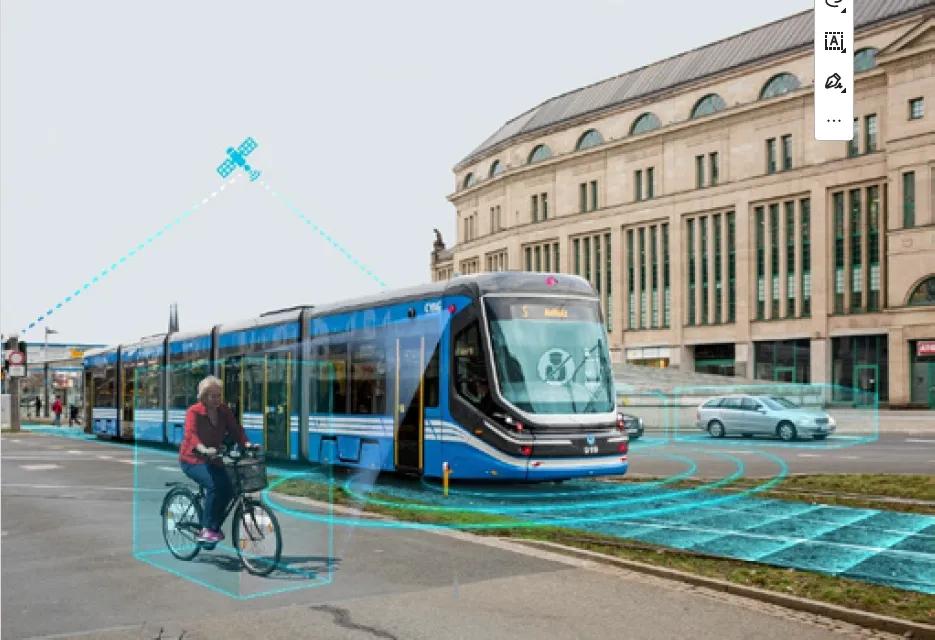The "SmarTram" project by HÖRMANN Vehicle Engineering
With increased interaction with other road users, such as on the road or in streetcars, current systems usually reach their limits.
The "SmarTram" project is investigating the requirements for the vehicle and its operation with the aim of enabling autonomous driving in the Chemnitzer Verkehrs-AG streetcar network. A particular focus is on the investigation and further development of hybrid systems involving vehicle- and infrastructure-based sensors.
HÖRMANN Vehicle Engineering (HVE) is the consortium leader in this project and is working together with Chemnitzer Verkehrsbetriebe (CVAG), Industrieanlagen- Betriebsgesellschaft mbH (IABG) and FusionSystems GmbH. HVE's overall vehicle expertise is enhanced by IABG's know-how in secure communication and validation as well as by FusionSystems' sensor technology and sensor data fusion. CVAG is contributing its expertise in streetcar operations and enabling practical testing on the Chemnitz route network with a prototype vehicle.
This ambitious project will run from 2022 to 2025 and is being funded as a joint project by the Federal Ministry for Economic Affairs and Climate Protection.
Pilot project for autonomous train control on CVAG Line 5
At the beginning of the project, the extensive operational tasks of the drivers had to be analyzed and conceptually considered for later autonomous implementation. CVAG's Line 5 from Gablenz to Hutholz was selected as the pilot route, a large part of which has its own track. The operating procedures and infrastructure were examined on this route. Digital route maps with all infrastructural features were created for use in the vehicle. This infrastructure model describes the route in terms of limit values (maximum speed), position of points, separation points, traffic signals, etc. It is the basis for determining the target values for driving and for environment detection.
The system architecture developed from the requirements describes the necessary components for environment detection, navigation and driving control as well as the safe and high-performance communication between them.
A "Tatra T3D-M" streetcar (modernized in 1994) is used as the pilot vehicle. This vehicle does not yet have on-board computer systems, and the control system is also purely electromechanical. However, this technology made it possible to access the driving functions without making any changes to the vehicle and without interfering with the safety mechanisms.
Pioneering progress in automated streetcar operation
By 2024, the engineers were able to demonstrate automated operation in the depot in practice in accordance with the specifications of the infrastructure model. In addition to the criteria for energy-saving and low-wear driving, ergonomics also play an important role. Smooth acceleration, braking and stopping have a major influence on the passenger's perception of safety.
For the system developers at HÖRMANN Vehicle Engineering, this project represents the link between vehicle technology and operating processes. The results of the environment detection of obstacles and traffic lights are currently being integrated into the vehicle's control system. This will make it possible to react safely to obstacles and stopping events.
HÖRMANN Vehicle Engineering GmbH Autonomous streetcar "SmarTram" Engineering The project provides important information about the characteristics that a future autonomous streetcar should have. To this end, the findings from the project were presented in a vision vehicle. In particular, communication inside and outside the vehicle to communicate with passengers, passers-by or other road users stands out. The driver's "eye contact" must be replaced by adequate technology.
The aim is to drive a streetcar autonomously on a selected section of the route in September 2025. The project is thus demonstrating that autonomous streetcar operation will be possible under certain conditions.
